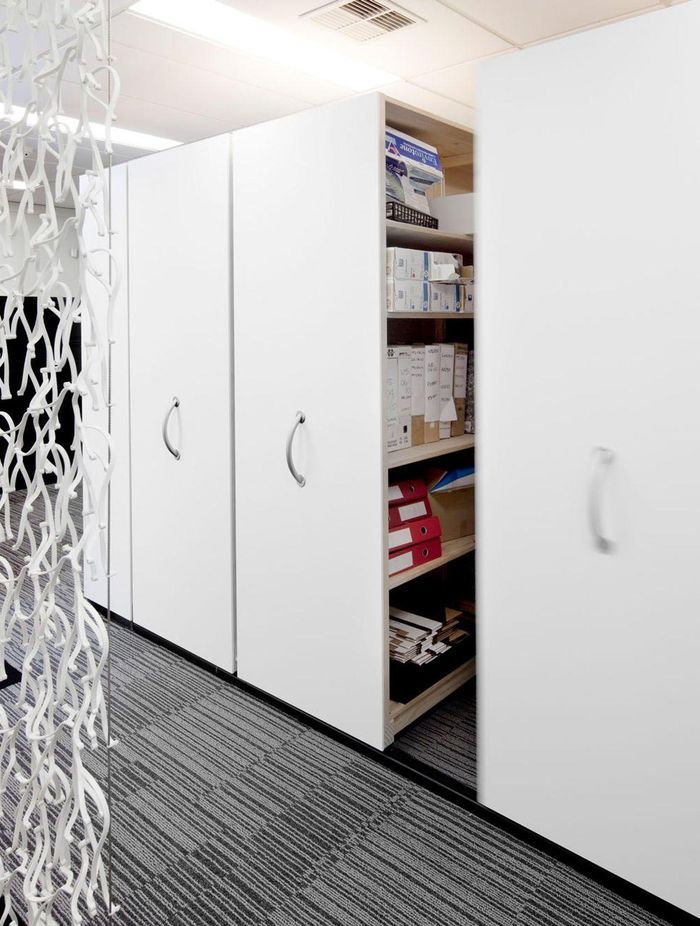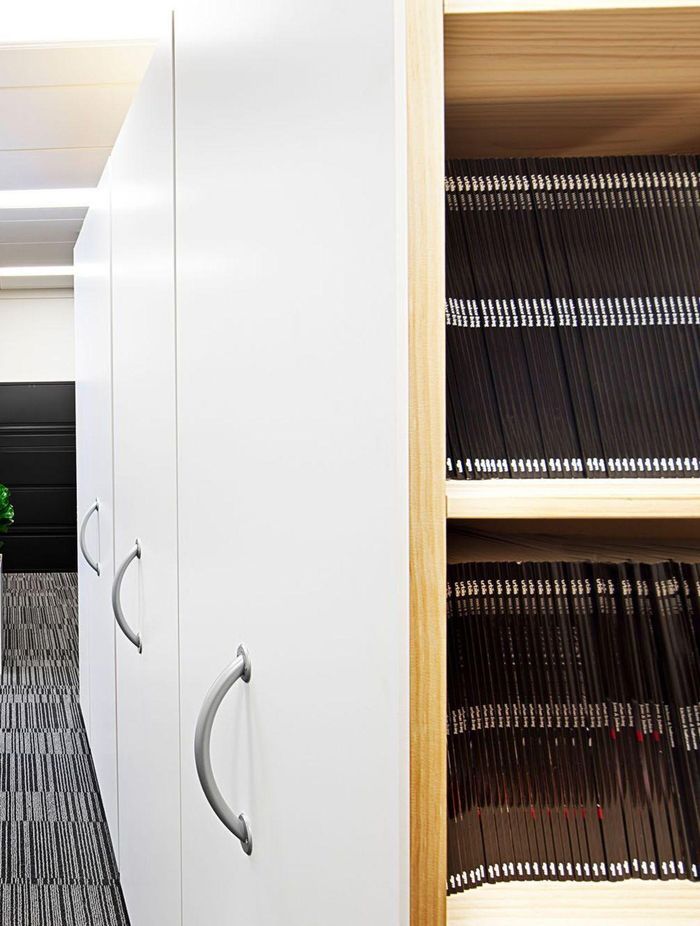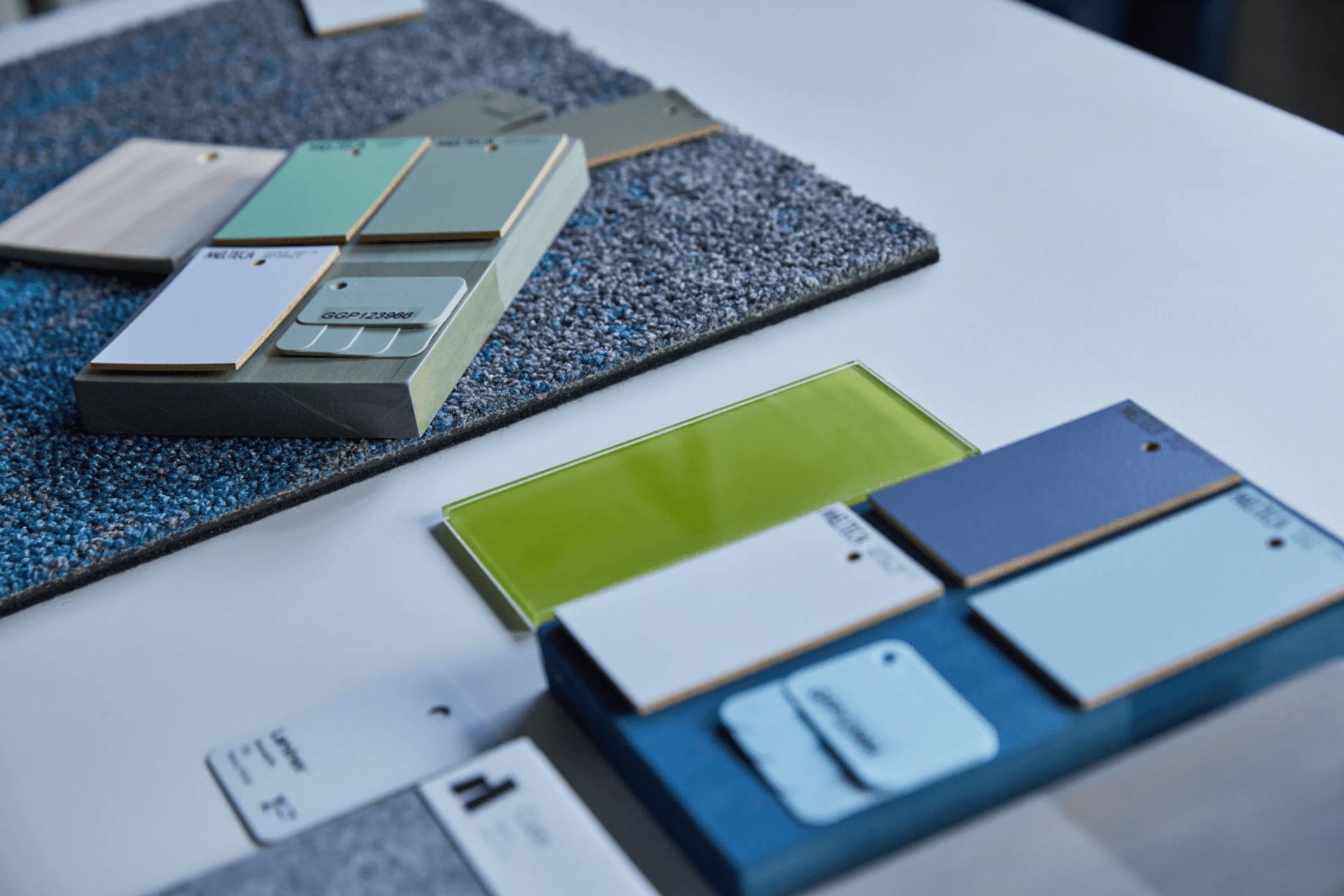Why mobile shelving is the space-saving solution for commercial spaces
Written by
29 September 2025
•
4 min read
What is mobile shelving?
Unlike traditional static shelves that rely on multiple fixed aisles, mobile shelving maximises usable space by eliminating unnecessary gaps and bringing intelligent design into every corner of the workplace.
“Mobile shelving is the classic Lundia system installed on tracks, allowing the shelving bays to move rather than remain fixed,” says Oceárn Bradshaw, Sales and Marketing at Lundia.
“Built from modular components in sustainably grown New Zealand pine, the system combines flexibility with durability.”
The core difference between mobile and traditional shelving lies in space efficiency. By eliminating fixed aisles, mobile shelving can reduce the required footprint by up to 50 per cent, making it the ideal solution for high-density storage environments.
How it works in commercial settings
Mobile shelving systems consist of shelving bays mounted on a track system that allows them to slide side-to-side. “Since office staff usually only need access to one aisle or bay at a time, our mobile systems make it possible to minimise storage footprints, helping to store more within less space,” says Oceárn. From accounting firms managing extensive paper records to universities housing research archives, the ability to compactly store materials while maintaining quick access is invaluable. Whether the priority is daily access or long-term archiving, mobile shelving offers a flexible solution adaptable to changing storage needs.
Mobile shelving systems offer several standout advantages:
- Space savings: half that of static shelving, dramatically reducing real estate costs
- Improved organisation: Customisable bays and accessories make it easier to categorise and access items
- Enhanced security: Units can be locked when not in use, providing protection for sensitive or valuable materials
- Custom style: Shelving colours and end panels can be tailored to suit design preferences, ensuring the system blends in or reflects a company’s identity.


Flexibility and integration
A common concern is whether such systems can be retrofitted into existing layouts. The answer? “Absolutely. Mobile shelving can be integrated into existing office layouts with ease. We can design a layout in-house to suit your floor plan, or provide .dwg files for architects and designers to work with,” says Oceárn.
Moreover, mobile shelving can be customised to house computers, lab equipment, or specialised materials, making it a versatile choice for diverse sectors, including retail, healthcare, education, and showrooms.
“Our systems are used across multiple industries such as retail, healthcare, education and corporate offices.”
Other myths include the idea that mobile systems are complicated or noisy. Contrary to this, mobile systems are lightweight and ergonomic. The bays operate on precision-engineered tracks for smooth, quiet movement.
For workplaces where records need to be secure and easily accessible, mobile shelving proves especially valuable.
"With moving bays, only one aisle is opened at a time, allowing maximum storage density while keeping records easily accessible. Organised bays and optional labelling make it quick for staff to locate and retrieve documents, saving time and maintaining an efficient workflow."
The typical installation timeline ranges from two to seven days, depending on the size and scope of the project.
Safety is also top of mind for the brand, Oceárn explains, “Our units are fully compliant, anchored, and designed to meet strict seismic codes; it's often safer than static shelving!” While the modular design ensures that as needs change, the system can evolve without as well.

Top tips for specifiers
When choosing shelving for spaces like universities or corporate offices, Lundia recommends focusing on three key aspects:
- Space efficiency
- Accessibility
- Flexibility
“Consider the size and layout of the room, the types of items being stored, and whether customisation (such as end panels, signage, or accessories) will help improve organisation and workflow.”
The ability to halve storage footprints, integrate effortlessly with existing spaces, and adapt over time demonstrates mobile shelving is ideal for space management in commercial design.
View the extensive range on the Lundia website or contact them on ArchiPro today.
